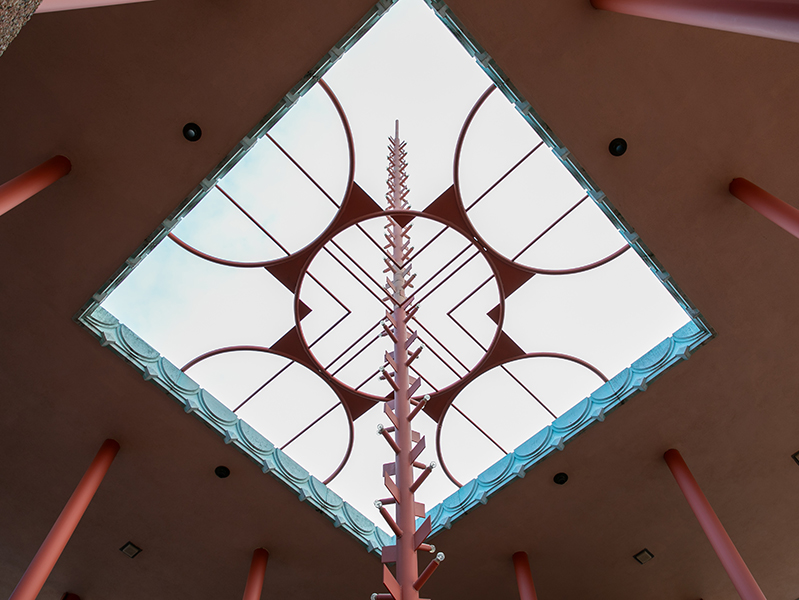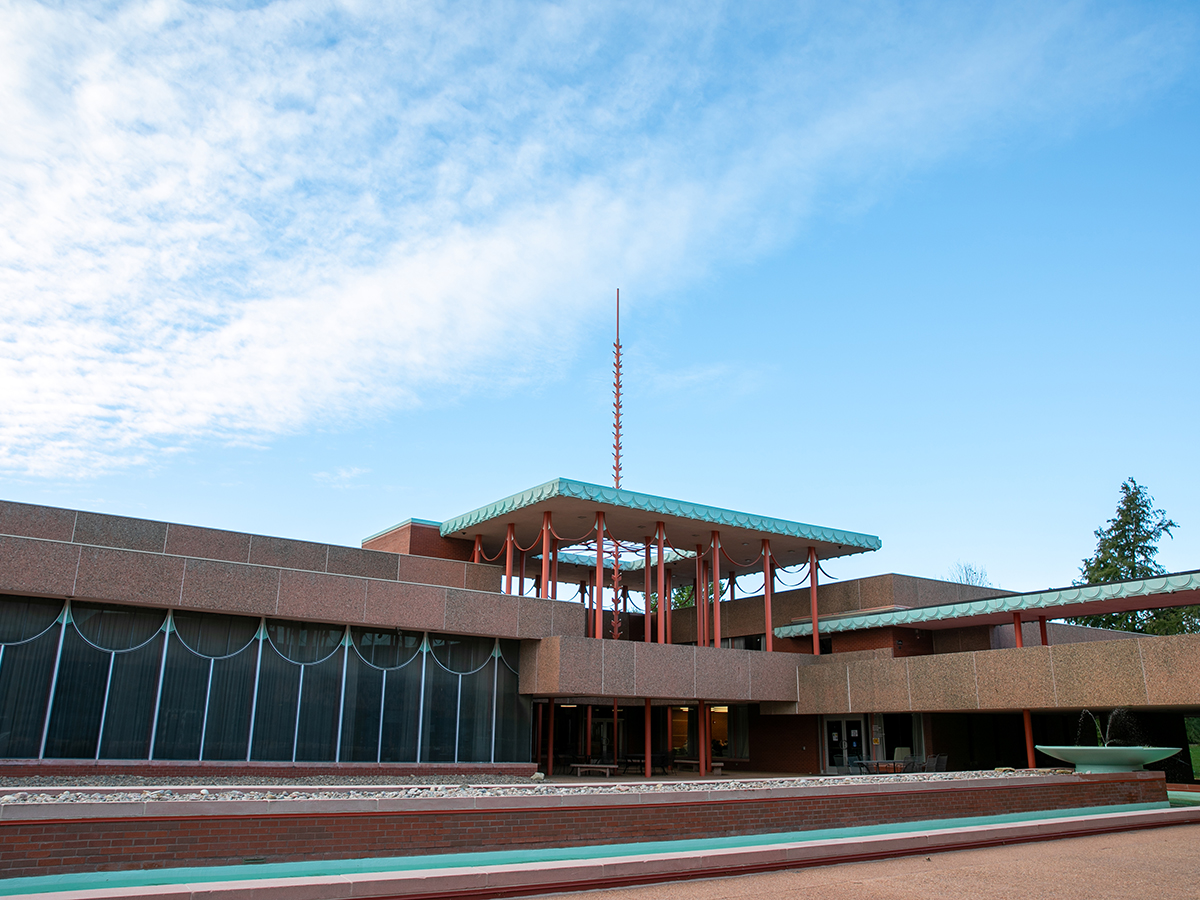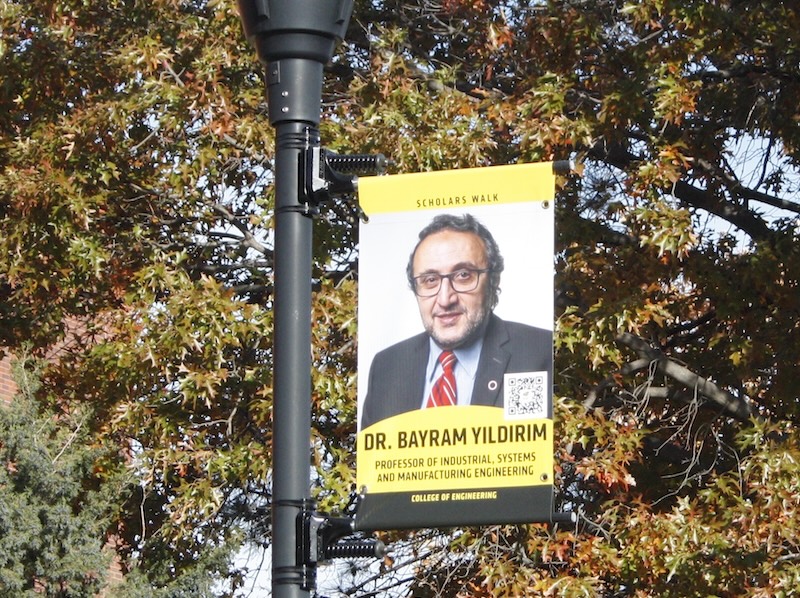Wichita State University’s Corbin Education Center, designed by the world-renowned architect Frank Lloyd Wright, has been added to the National Register of Historic Places, a distinction reserved for America’s most significant architectural and cultural landmarks.
 Dedicated in 1964 and named for former University of Wichita President Harry F. Corbin,
the building embodies Wright’s creative genius and his philosophy of blending architecture
with nature.
Dedicated in 1964 and named for former University of Wichita President Harry F. Corbin,
the building embodies Wright’s creative genius and his philosophy of blending architecture
with nature.
Today, Corbin is the home of Wichita State’s College of Applied Studies, classroom space and advising offices.
“Being listed on the National Register of Historic Places is an acknowledgment that this building is a vital piece of our cultural and educational heritage,” said Emily Patterson, Wichita State’s executive director of facilities planning. “As one of only two Wright-designed structures in Kansas, Corbin deserves to be celebrated and preserved for future generations. We’re deeply grateful to everyone who helped make that happen, particularly Friends of Corbin, Craig Rhodes and Jay Price. Their passion and persistence made this possible.”
A labor of love and community collaboration
The nomination was led by Friends of Corbin, a local group formed in 2023 to advocate for the preservation of the Wright-designed education center. The group includes Dr. Nancy Davis, a 1982 Wichita State grad; Craig Rhodes, design director at LK Architecture; and Dr. Jay Price, professor of history and chair of WSU’s history department, among others.
Rhodes, who once took English classes in the south wing of Corbin, said his personal connection fueled his commitment to the effort.
“Even as a student, I was struck by how different the space felt — the natural light, the openness, the sense of creativity,” Rhodes said.
The application to put Corbin on the registry began in July 2022.
“It’s been a rewarding journey,” Rhodes said.
Price said the honor underscores Wichita’s unique place in Wright’s legacy.
“Not every Frank Lloyd Wright building automatically qualifies for the National Register,” he said. “To be listed, a structure must retain its integrity and tell an important story. Corbin does both. It reflects Wright’s architectural evolution and connects Wichita to the broader narrative of mid-century design.”
A vision realized
Wright conceived the Corbin Education Center — originally called the Juvenile Cultural Center — in 1957, during one of the most prolific periods of his career. Inspired by his unbuilt Plan for Greater Baghdad, the design features open courtyards, covered walkways and vast light-filled interiors that blur the boundaries between indoors and outdoors
Dr. Jackson O. Powell, then dean of education at WSU, envisioned a space that would revolutionize teacher training — a place where architecture itself became part of the learning process.
“Experimentation may begin with the actual design of such a facility,” Powell wrote to President Corbin in the 1950s. “We hope that specific solutions to problems raised and solved in the design of this facility will affect school architecture in this geographic region.”
Although Wright’s original plan called for two buildings — an education center and a circular laboratory school for teacher training — only the main structure was completed after the university joined the state system in 1963.
Renewal and resilience
The Corbin Education Center unexpectedly closed in 2024 after a water leak flooded the basement, destroying electrical, HVAC and IT systems. Following an extensive restoration — including replacement of major building systems and the fountain in its iconic courtyard — faculty and staff moved back into their offices in September, and classes will resume in the building in January.
Davis says the designation marks a turning point.
“We’re thrilled to see Corbin officially recognized,” she said. “This is the first step toward ensuring the building is preserved and appreciated for the masterpiece it is. We’re also excited to partner with the Allen House for tours and educational programming that highlight Wright’s lasting impact on Wichita.”
The Corbin Education Center joins Wright’s Allen House (also in Wichita), which was added to the register in 1977, as one of only two Frank Lloyd Wright-designed buildings in Kansas.
About Wichita State University
Wichita State University is Kansas' only urban public research university, enrolling more than 25,000 students between its main campus and the WSU Campus of Applied Sciences and Technology (WSU Tech), including students from every state in the U.S. and more than 100 countries. Wichita State and WSU Tech are recognized for being student-centered and innovation-driven.
Located in the largest city in the state with one of the highest concentrations in the United States of jobs involving science, technology, engineering and math (STEM), Wichita State University provides uniquely distinctive and innovative pathways of applied learning, applied research and career opportunities for all of our students. The National Science Foundation ranked WSU No. 1 in the nation for aerospace engineering R&D, No. 2 for industry-funded engineering R&D and No. 8 overall for engineering R&D.
The Innovation Campus, which is a physical extension of the Wichita State University main campus, is one of the nation’s largest and fastest-growing research/innovation parks, encompassing over 120 acres and is home to a number of global companies and organizations.
Follow Wichita State on social media:






